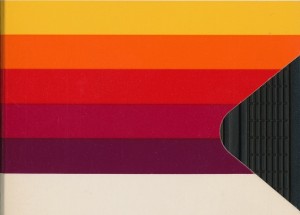XFR STN (“Transfer Station”) is a grass-roots digitization and digital-preservation project that arose as a response from the New York arts community to rescue creative works off of aging or obsolete audiovisual formats and media. The digital files are stored by the Library of Congress’s NDIIPP partner the Internet Archive and accessible for free online. At the recent Digital Preservation 2014 conference, the NDSA gave XFR STN the NDSA Innovation Award. Last month, members of the XFR collective — Rebecca Fraimow, Kristin MacDonough, Andrea Callard and Julia Kim — answered a few questions for the Signal.
Mike: Can you describe the challenges the XFR Collective faced in its formation?
XFR: Last summer, the New Museum hosted a groundbreaking exhibit called XFR STN. Initiated by the artist collective Colab and the resulting MWF Video Club, the exhibit was a major success. By the end of the exhibition over 700 videos had been digitized with many available online through the Internet Archive.
It was clear for all of us involved that there was a real demand for these services, that there are many under-served artists who were having difficulty preserving and accessing their own media. Many of the people involved with the exhibit became passionate about continuing the service of preserving obsolete magnetic and digital media for artists. We wanted to offer a long-term, non-commercial, grassroots solution.
Using the experience of working on XFR STN as a jumping-off point, we began developing XFR Collective as a separate nonprofit initiative to serve the need that we saw. Over the course of our development, we’ve definitely faced — and are still facing — a number of challenges in order to make ourselves effective and sustainable.
“VHS 2″ by XFR Collective.
Perhaps the biggest challenge has simply been deciding what form XFR Collective was going to take. We started out with a bunch of borrowed equipment and a lot of enthusiasm, so the one thing we knew we could do was digitize, but we had to sit down and really think about things like organizational structure, sustainable pricing for our services, and the convoluted process of becoming a non-profit.
Eventually, we settled on a membership-based structure in order to be able to keep our costs as low as possible. A lot of how we’re operating is still very experimental — this summer wraps up our six-month test period, during which we limited ourselves to working with only a small number of partners to allow us to figure out what our capacity was and how we could design our projects in the future.
We’ve got a number of challenges still ahead of us — finding a permanent home is a big one — and we still feel like we’re only just getting started, in terms of what we can do for the community of artists who use our services. It’s going to be interesting for all of us to see how we develop. We’ve started thinking of ourselves as kind of a grassroots preservation test kitchen. We’ll try almost any kind of project once to see if it works!
Mike: Where are the digital files stored? Who maintains them?


